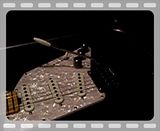martyhk0
Well-known member
is there any advantage to buying the more expensive 6166 over the Jr, pedal?
Is it true that I will need a seperate 25k volume pedal for my luke (my only active pu guitar)?
Is it true that I will need a seperate 25k volume pedal for my luke (my only active pu guitar)?



